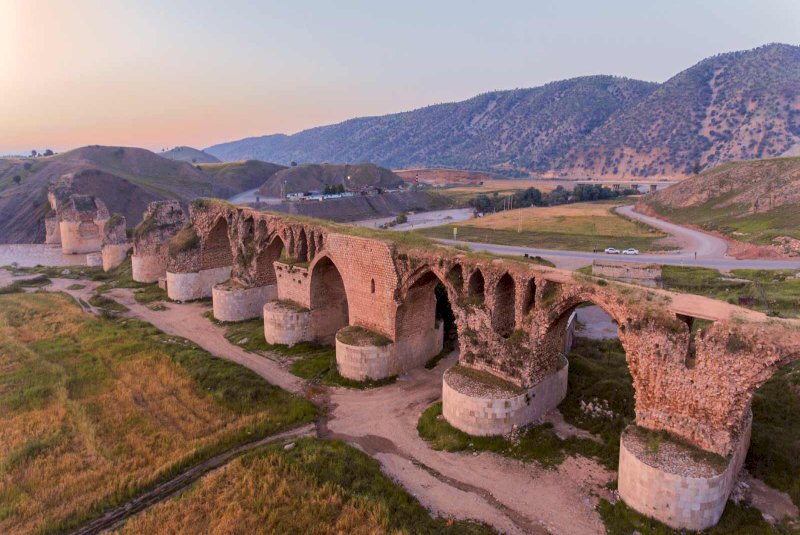Flood-hit ancient bridge undergoes restoration

TEHRAN – The third round of a restoration project has been commenced on the historical Kashkan Bridge, which suffered damage from heavy flooding in 2019.
The Sassanid-era (224 CE to 651) monument is located in the western province of Lorestan.
The project involves strengthening the bed of the bridge, on which the pillars are fixed, the provincial tourism chief has said.
The foundation of the bridge is also being reinforced and restored, Seyyed Amin Qassemi explained on Wednesday.
Restorers have been tasked to remain loyal to the bridge’s original design as much as possible using the same material similar to those used in its construction, he noted.
Kashkan Bridge is 300 meters long, and it originally had 11 columns and 12 arches, some parts of which are ruined or wiped away. Its height varies between 10 to 26 meters. Inscribed on the National Heritage List, the bridge is one of the most spectacular attractions of the ancient region.
Days of devastating flooding and heavy rain in March 2019 inflicted damage to tens of cultural heritage sites in Lorestan. For instance, it washed away parts of a historic hill, on top of which the famed Falak-ol-Aflak Castle is nested.
Lorestan, which is a region of raw beauty, was inhabited by Iranian Indo-European peoples, including the Medes, c. 1000 BC. Cimmerians and Scythians intermittently ruled the region from about 700 to 625 BC. The Luristan Bronzes noted for their eclectic array of Assyrian, Babylonian, and Iranian artistic motifs, date from this turbulent period. Lorestan was incorporated into the growing Achaemenid Empire in about 540 BC and successively was part of the Seleucid, Parthian, and Sasanid dynasties.
ABU/AFM
Leave a Comment